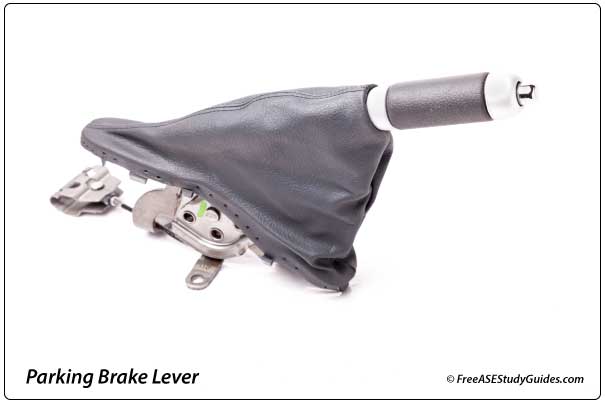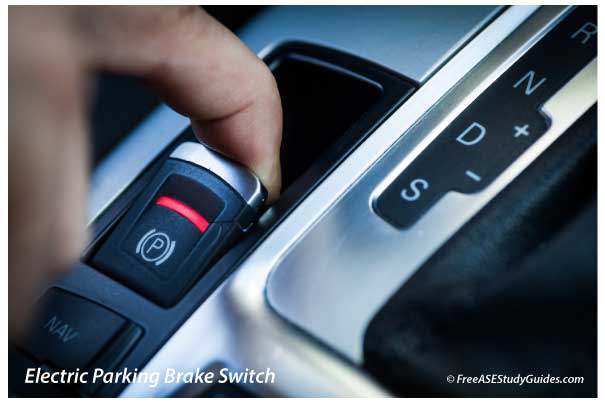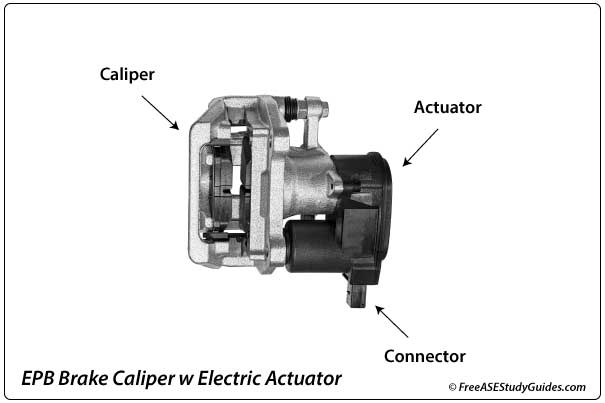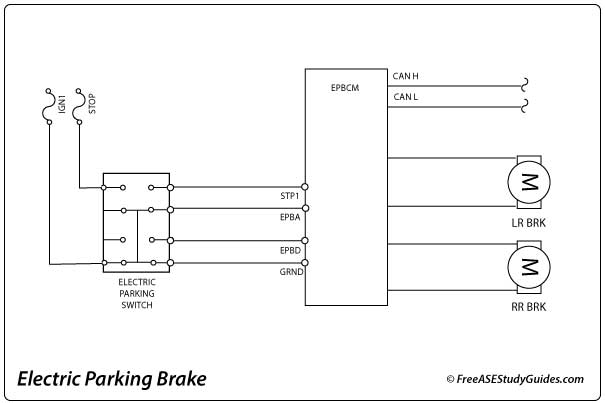Parking Brakes

Parking brakes can be a backup if the hydraulic brake system fails and keep a vehicle stationary when parked. Parking brakes are mechanical with cables and levers or electric, controlled by computer modules and operated by actuators/motors.

Mechanical parking brakes have a cable that connects a lever in the passenger compartment to a lever on each rear brake unit. Electric parking brakes have a switch on the console that signals a control module to operate a central motor or actuators on each rear caliper.

Many people prefer a mechanical brake over an electric unit. Electric units can have programming that prevents them from operating in certain conditions and leaves the brakes applied if the battery dies. One problem with standard parking brakes is that most drivers only use them if parked on a hill, resulting in unknown problems like binding and rusty cables when needed.

The parking brake warning light illuminates if there is a problem with the parking brake. The parking brake switch on the pedal or handle signals the instrument panel or control module that the brake is engaged. Pulling up on the handle completes the circuit, illuminating the warning light on the instrument panel.

The light will remain on if the switch or circuit is faulty or the handle isn't released. If the warning lamp activates with the bidirectional scanner but not the actual parking brake, the light bulb is good; suspect a problem with the switch or its circuit. The pedal/handle should have tension when applying the parking brake. Looseness indicates a stretched cable or under-adjusted rear brakes.
Electric parking brakes can have a central motor that pulls a cable that applies the rear parking brakes or caliper-mounted actuators; pulling or pressing a button on the console inputs a signal to the controller controlling the electric parking brakes.

Modern parking brakes have actuators bolted to the rear calipers that apply and release the parking brake. The motor turns a worm gear that moves the caliper's piston into contact with the rotors. If the battery dies overnight, the vehicle may require a replacement battery or a jumpstart to release the parking brake.

The PBCM controls the actuators. If all the inputs to the control module are good, but the outputs to the actuators are not, suspect a faulty control module. The switch in the passenger compartment and the motor or actuators at the rear calipers do most of the work; these moveable components in electric parking brake systems are also the most likely to fail.